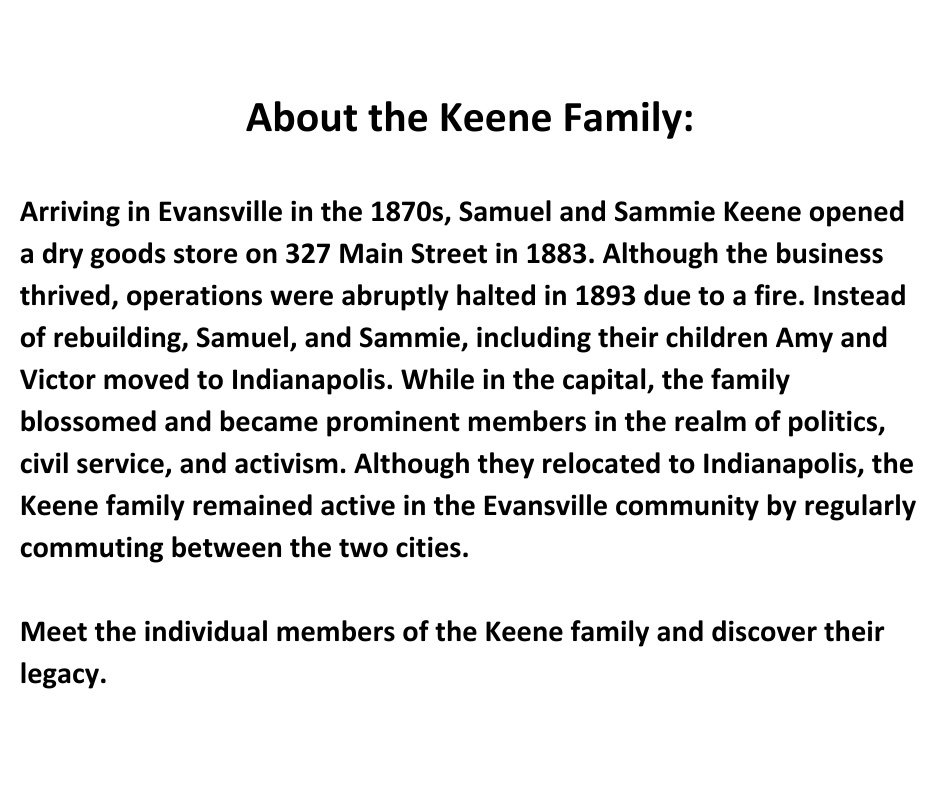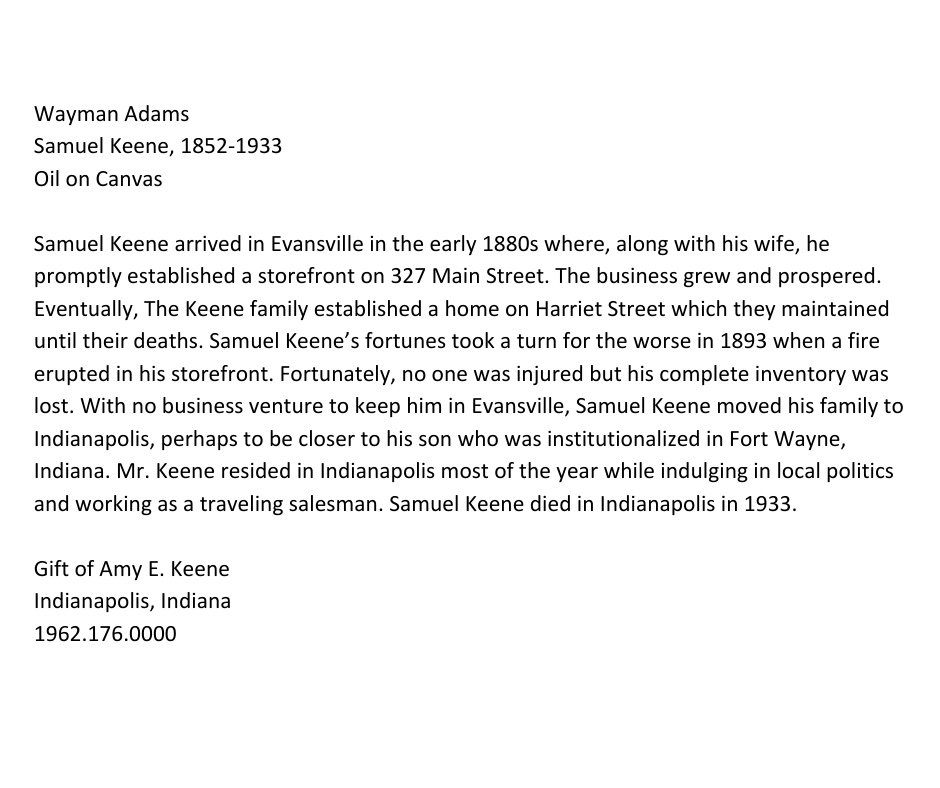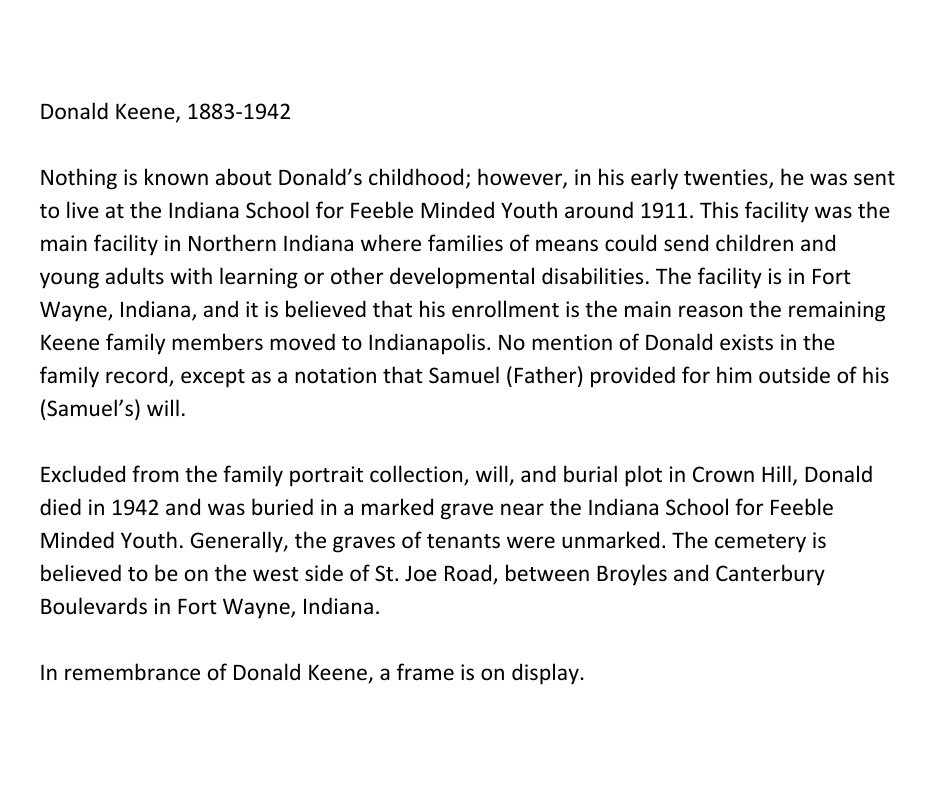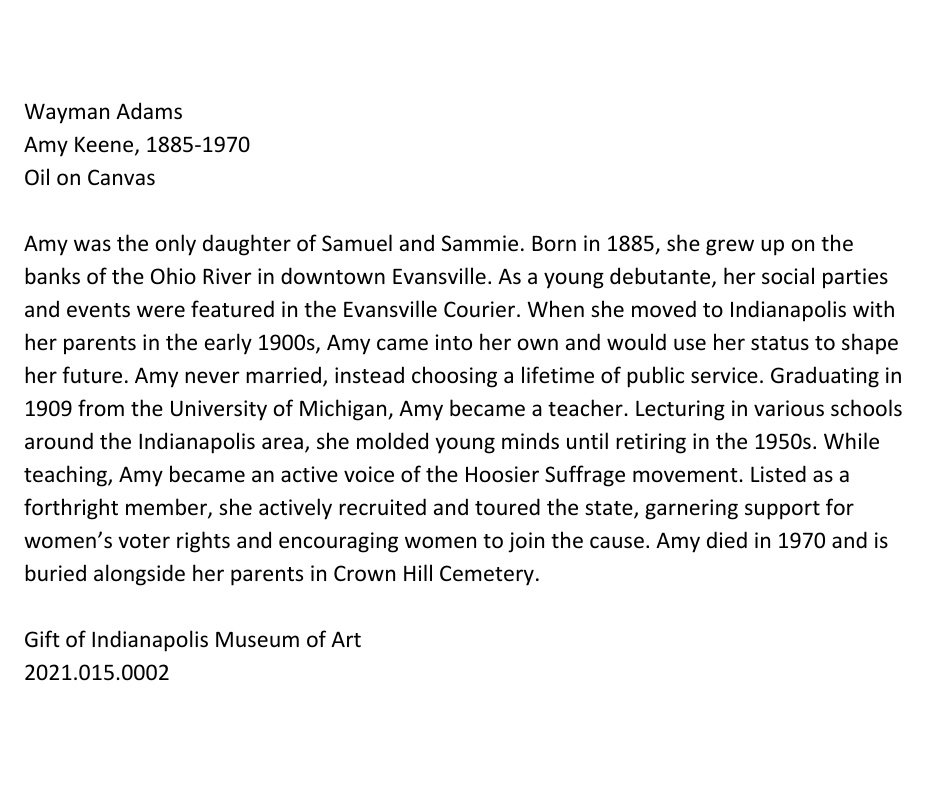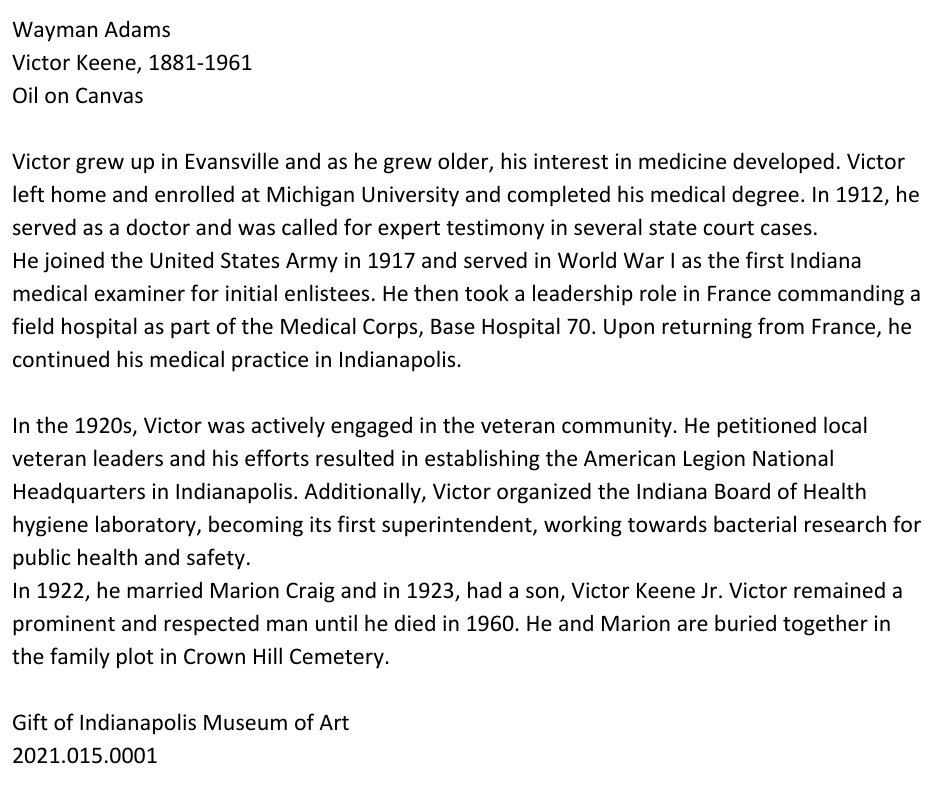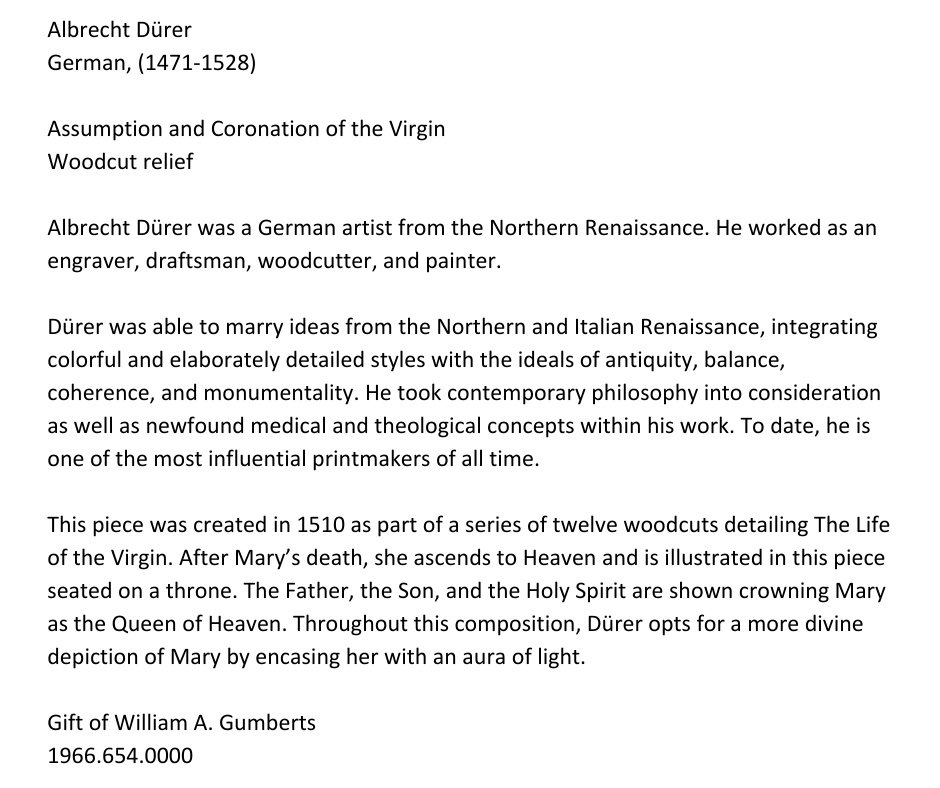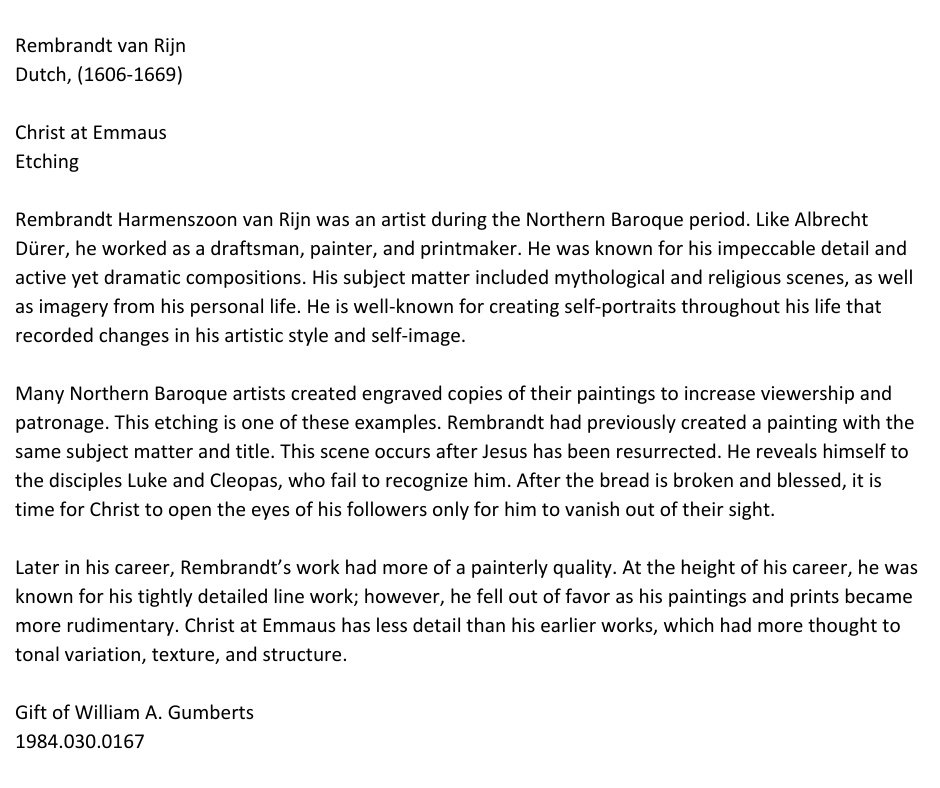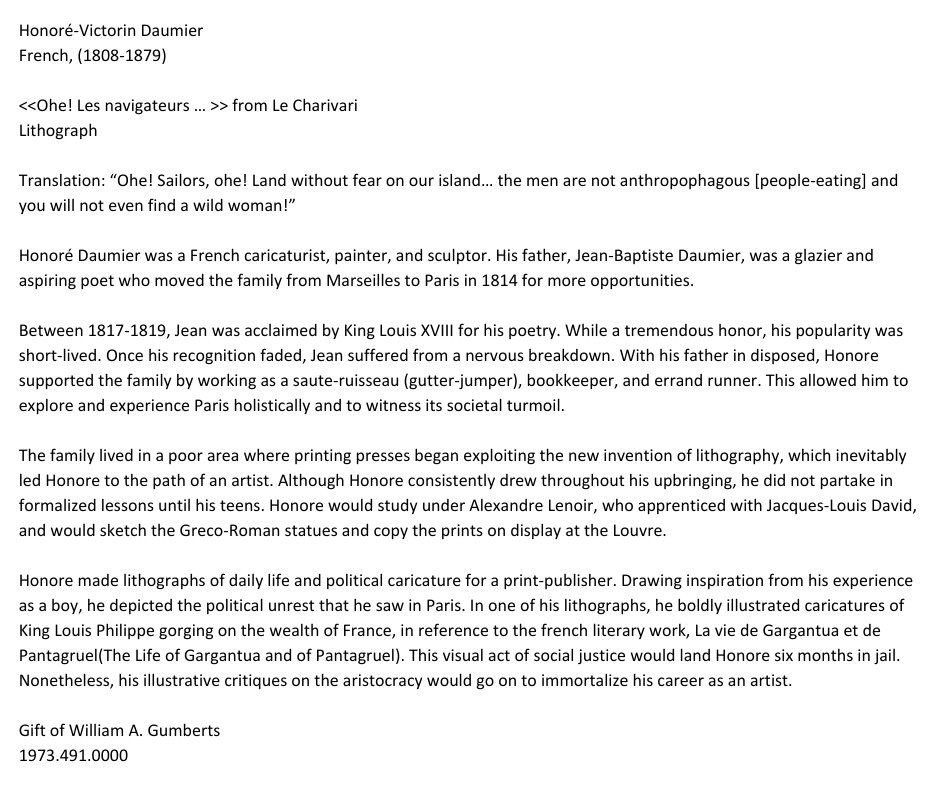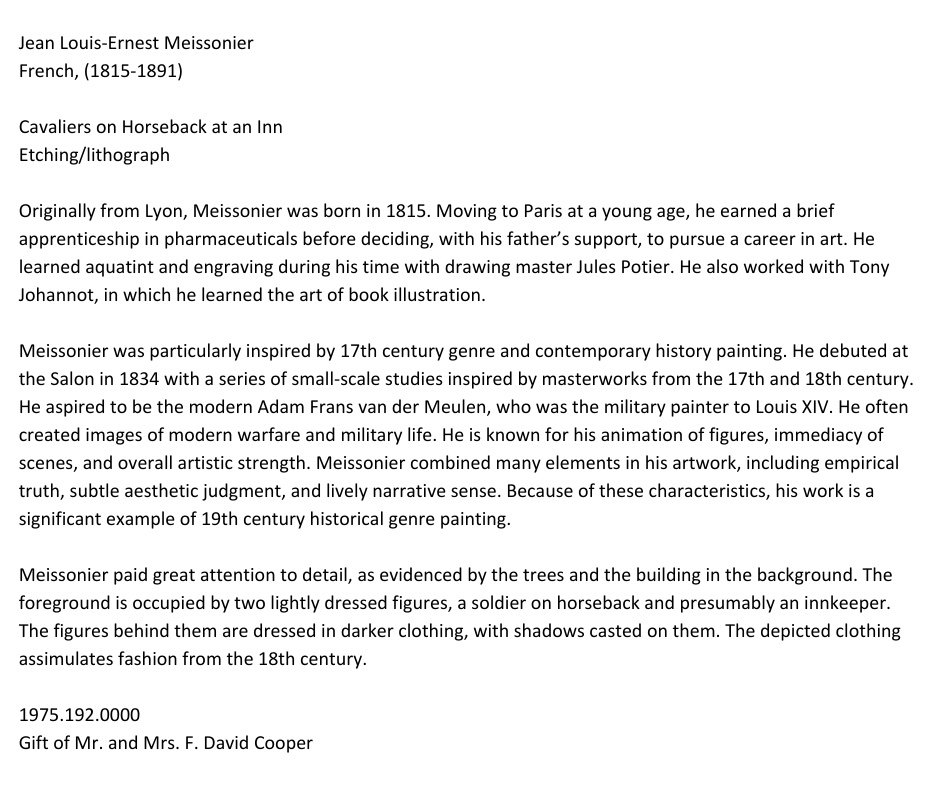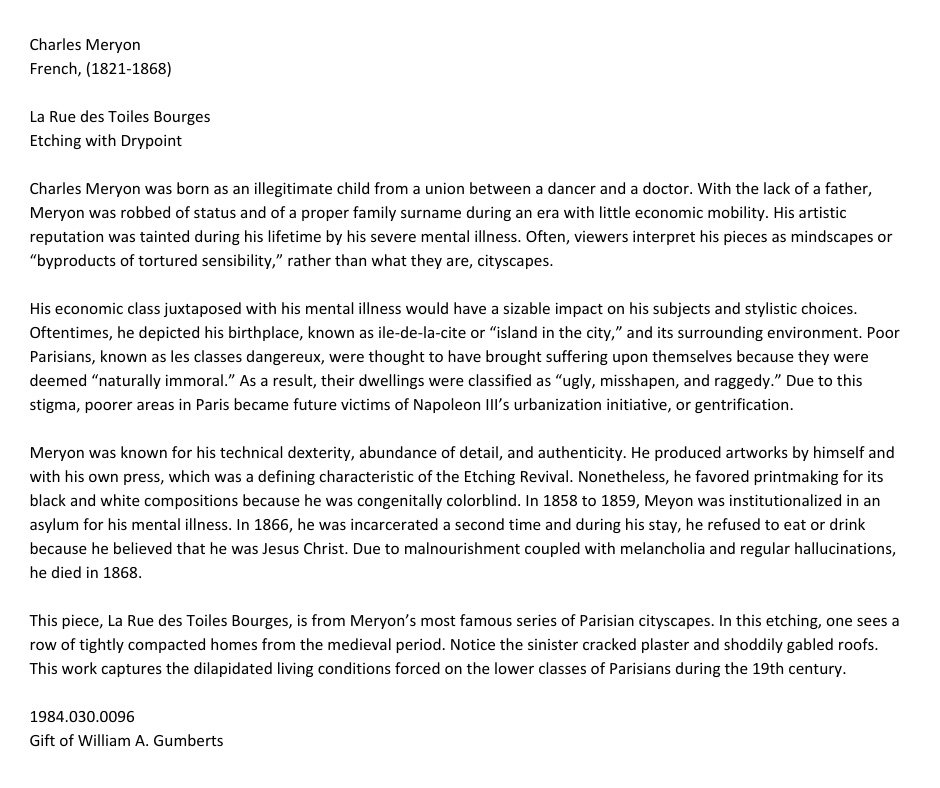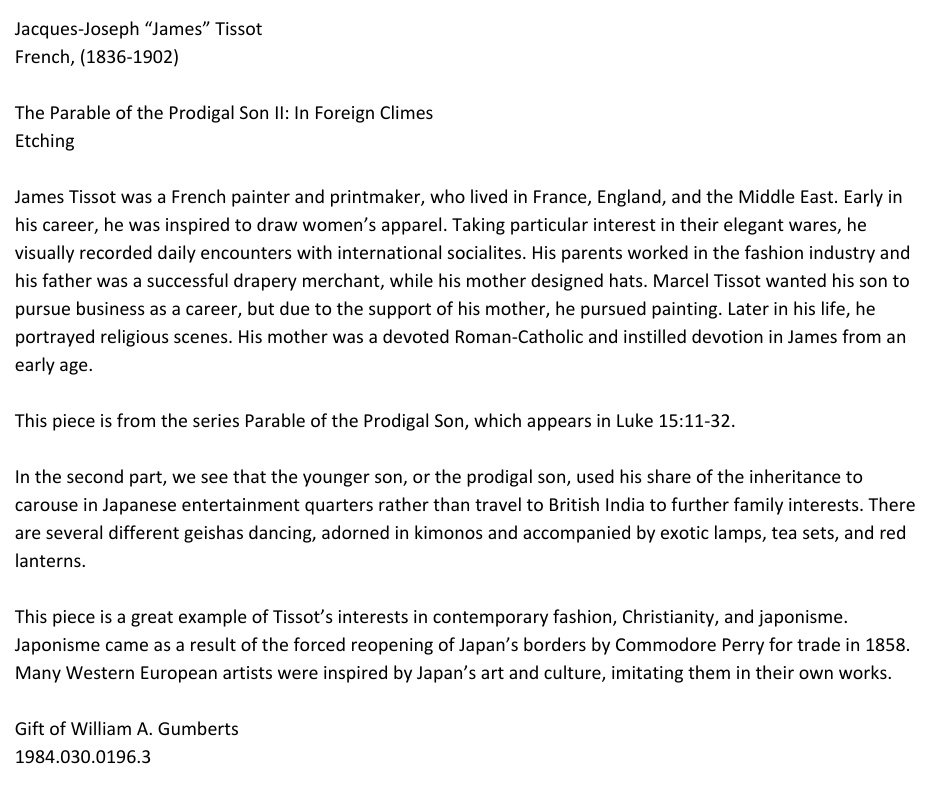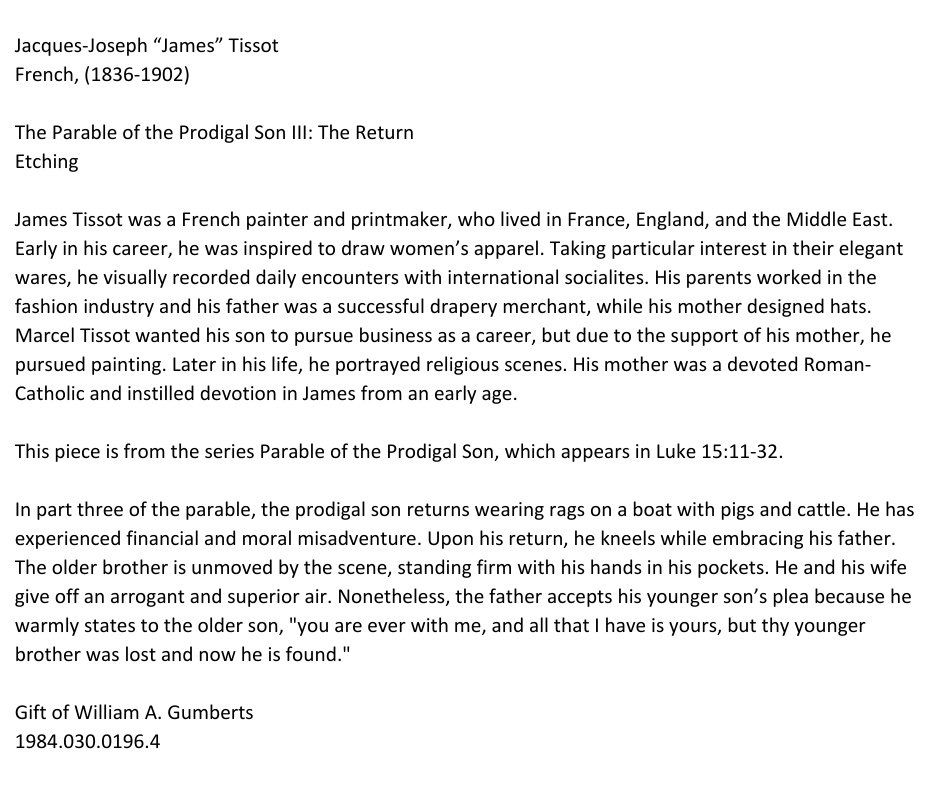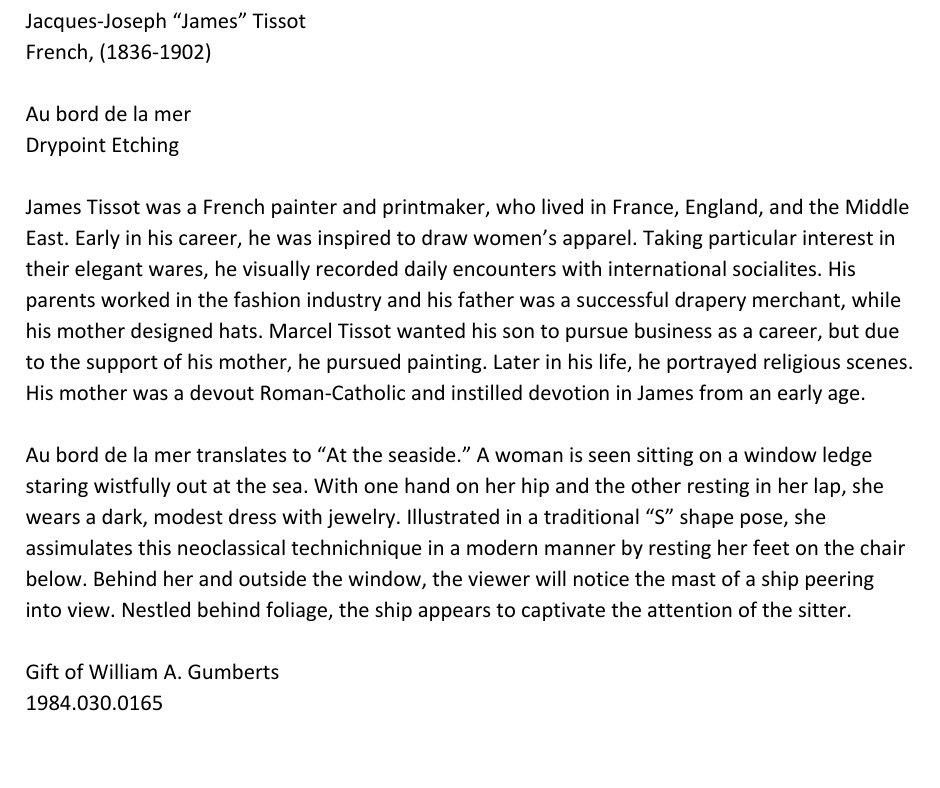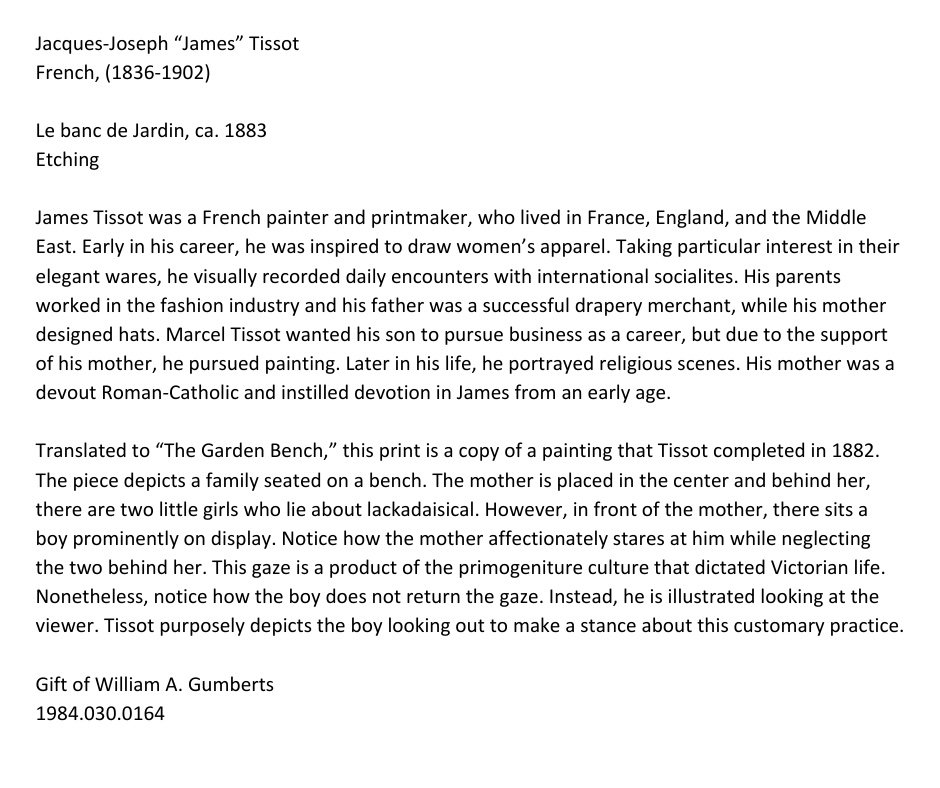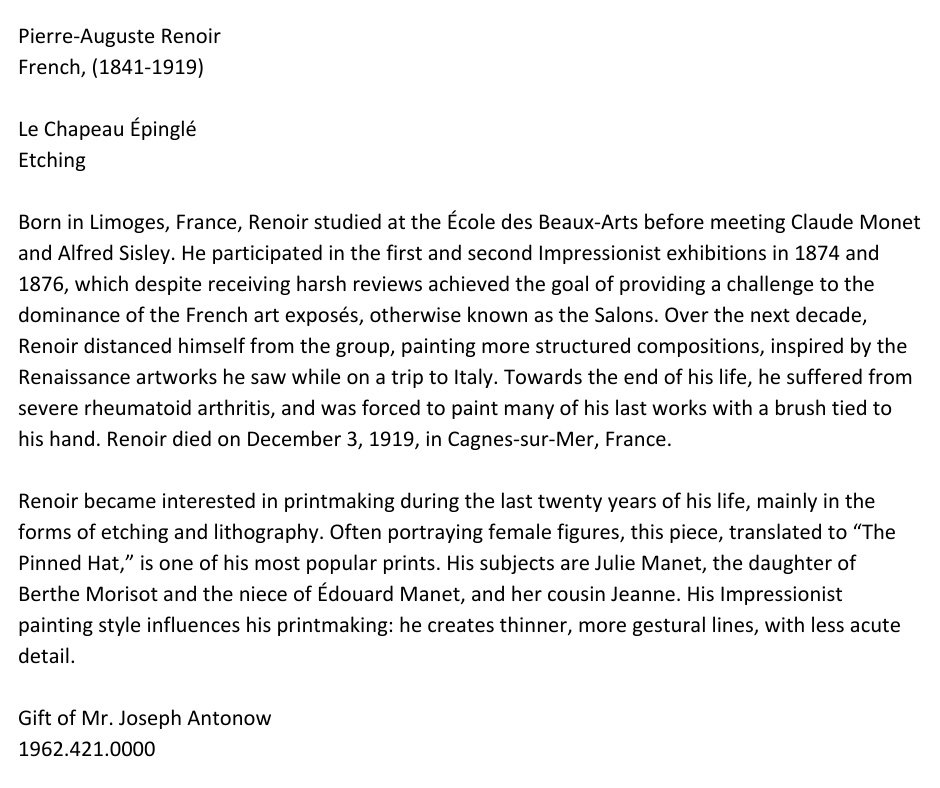MEET THE 2022 CURATORIAL DEPARTMENT OF ART INTERNS
Daniel Griffaton
Biography:
My name is Daniel Griffaton. I am from Pickerington, which is a suburb of Columbus, Ohio. I am a junior at the University of Evansville and am pursuing double degrees in music (B.S.) and archaeology (B.A.). My primary instrument is the clarinet and I participate in band, orchestra, and many other ensembles. My primary archaeological interest is the Levant, but I am also very interested in Roman archaeology as well as in Roman interactions with the Levant. History has always been my best and favorite subject, and from a young age, I knew that I wanted a career in a history-based field.
Throughout the past year, I have been able to participate in a wide variety of archaeological work. In the Spring of 2021, I was part of Dr. Ebeling’s class on Jezreel, a site located in northern Israel. This class provided much insight into Jezreel, the Jezreel Expedition, and the reality of working in the Levant. A major part of this class was focused on designing a website/database for the Expedition. Over the summer, I participated in a fellowship with Dr. Ebeling where I cataloged artifacts into the database and conducted original research on some of the metal artifacts from Jezreel. I also attended a field school in Menorca, Spain, to excavate a Roman basilica. I was able to end my archaeologically filled year by participating in the Tin City excavation on UE’s campus and interning with the Evansville Museum of Arts, History, and Science. These experiences throughout the year confirmed that I want to pursue a career that pertains to history and am currently inclined towards a museum career.
Reflection:
This internship was my first foray into the workings of the museum world, and I could not have asked for a better supervisor than the Virginia G. Schroeder Curator of Art, Tory Schendel Cox. The goal of this internship was to help develop a future exhibit on Biblical Archaeology and Jezreel. My work involved developing the main goals of the exhibition, events, and interactive exhibits, and conducting research on demographics, the history of Jezreel, and artifacts from Jezreel. I also was involved in the installation and deinstallation of various museum exhibits.
Thanks to my experience interning with the Evansville Museum and Tory, I have a better understanding of the long process of exhibit development from conceptualization to installation. The most important thing that I learned about curation is that circumstances are always changing so you must be adaptable. The acquisition of artifacts, availability of research, and funding (or the lack of) can vastly change the size and scope of an exhibit. Thankfully, I did not have to deal with these issues and instead spent most of my time conducting research. I learned how to research a wide variety of subjects quickly, as well as how to condense extensive research findings into a paragraph. Writing artifact descriptions was probably my favorite activity, as I learned lots of interesting information and enjoyed the challenge of condensing my 200–300-word paragraphs into 40-word summaries. I was also able to experience and participate in the creation of physical placards. I learned how the Museum collection is organized as well as how to unpack, handle, and transport various artifacts and artwork. Another important skill I learned and got to practice was my networking skill at the reception for Gino Miles.
I am very thankful to Tory, Dr. Ebeling, and the Evansville Museum for this opportunity to combine my interest in Biblical archaeology with my museum career ambition. I hope to be able to work with the Museum more in the future.
Richard Carawan
Biography:
Richard Carawan retired from the Air Force in 2017. In 2019, he and his family decided to make their final move to the Evansville area. Upon completion of his Master of Arts in History from Wayland Baptist University, he decided to continue his education and began to pursue his second master's, this time focusing on Museum Studies. Currently, he is enrolled in the Johns Hopkins University Museum Studies Program. While attending Johns Hopkins online, he works in the Evansville VA Health Care Center, assisting veterans with healthcare needs. He has been an intern with the Evansville Museum of Arts, History, and Science, for 6 months where he has worked on two exhibitions and learned the behind-the-scenes of the museum field. Additionally, he enjoys spending time with his wife of 12 years and taking his daughter to local and after-school events, and volunteering in his church. He hopes to turn this real-world and academic experience into a rewarding career in Collections Management or Registrar work.
Reflection:
Here is the tale of the “old man intern”
What an exciting thing to be an intern! Access without responsibility, learning without condemnation, and gaining experience for free! Wait… Hold on…that’s not what happened at all! Over the past six months, I have had the pleasure of working as an intern at the Evansville Museum of Arts, History, and Science in the Department of Art. What initially was a request for information and knowledge during a museum studies class has turned into a wealth of knowledge and experience about trial and error as I navigate through my professional studies. Balancing my work, school, and private life has been a test of my time management, and as Tory Schendel, the Virginia G. Schroeder Curator of Art at the museum, is always telling me “Life will get in the way, and then Exhibition time!”. So, making a priority of research and collaboration only once or twice a week is challenging in itself, but I digress. I have been part of different projects, each with its own unique challenges, and have used the privilege to practice skills that I hope to utilize soon.
The main project, the one that I have spent the most time on, is researching the Keene family portrait collection painted by Wayman Adams. A suitable subject for me, I used my historical skills and knack for metadata research to uncover the fascinating lives of this influential Evansville family. I say influential, for the father was a successful businessman, the daughter a debutante, and the son a doctor in the Great War who would alter the course of the American Legion. But to get more details, you will have to visit the exhibition. The challenges were tracking down the story of these individuals in conjunction with curating their portraits in the Gothic Room. I admit, I found the research about the Keene family more exciting than the painter (Shhhh...don’t tell the Art Curator), but the fact I was able to locate and tell their story, as well as uncover tidbits about Wayman Adams himself, made for a rewarding challenge.
During this internship, I spent hours in my car. Who knew interns traveled? First, I traveled to Indianapolis where the Keene family has a burial plot and spent time thinking about them as I stared at the headstones. Secondly, I traveled to Richmond, Indiana to pick up another painting by Wayman Adams. That was an adventure. I got to take my family and we had a great time looking at the historical museum. Also, I should mention, that I learned firsthand how some loan agreements are filled out and about the care taken to transport large items, especially since the Wayman painting of Julia Meek Gaar is heavy! Alas, field trips were over, and it was back to work. Research is a wonderful thing, but it doesn’t make for good Twitter, so pairing down my hours of searching and dozens of websites to a functional display that is both appealing and educational, is a trial to be sure. Ultimately, I am very happy to have found obscure facts about the Keene’s, obscure sketches done by Adams, and explored how the small world of historical societies, painters, and social activists come together. The exhibition should be finished by the end of January 2022, and I am happy to display the businessman turned politician; the debutante turned suffragette- turned schoolteacher; the doctor turned veteran activist and showcase the painter that captured them in oil on canvas. I have spent hours scouring the internet and libraries for information, driven hundreds of miles for supporting documents and paintings all to go on display. This should make for a fun and informative exhibit.
The past few months of my life have been a whirlwind of activity followed by the necessities of waiting. It has been a pleasure to learn in real-time from an accomplished mentor. The internship has provided an opportunity to experience museum life from behind the scenes without my life depending on the success or failures of my actions. To be honest, I hope that my skills and abilities will provide an advantage when I change jobs. To date, I have been part of school projects, research and provenance data gatherings, and exhibition building strategies. All of these skills I learned about in school. All of these skills I was able to put into practice. I hope that I can continue to learn, explore, and maybe find another internship.
Please enjoy the below virtual exhibition of Richard’s research on the Museum’s Keene Family Portrait Collection:
Cheyenne Miller
Biography:
My name is Cheyenne Miller, and I am a junior at the University of Southern Indiana. I am majoring in Art History, with minors in Studio Art (emphasis in printmaking) and French. Ever since I can remember, my three greatest passions have been art, writing, and history. When I was a child, my father would take me to museums all over the United States. I still remember many of them to this day, and I know many people have contributed to that memory. My goal is to someday be one of those people. I would like to repay the favor and inspire children like me, or adults like my father, in allowing them to view and appreciate art with different historical and societal contexts. I think it is an essential and enjoyable way to broaden your horizons in terms of history and pop culture. Some influences that I can name, however, are Susan Colaricci Sauls, who allowed me to begin living out my dream as a freshman in college, Professor Virginia Poston and Dr. Pritchard, who have reminded me why I began studying art history in the first place, and finally, Dr. Natoli and Dr. Jensen, who inspired me to continue learning the French language.
Reflection:
I was anxious to begin my internship with the museum at first, but that feeling gradually dwindled as I got to know Tory. She is an amazing source of knowledge on the inner workings of museums, both past, and present. She can step aside, view the positives and the negatives of the field, and create applicable solutions to better it for everyone involved. She provided me with hopeful yet realistic insights on the future of museums and my place in them. I am very lucky to have had this opportunity with the museum and to have gained some understanding of what my future will look like.
I chose to research French printmakers for this internship because I felt that there was a lack of representation in survey art history classes. Luckily, the museum has a variety of prolific French artists including Pierre-Auguste Renoir, Honore Daumier, James Tissot, and Paul Gavarni. These works of art reflect the historical and sociopolitical contexts of Paris at the time. France had been experiencing large bouts of upheaval and change resulting from economic instability and political corruption. Many artists represented in this exhibition experienced the negative impact of economic disparity firsthand.
I find that printmaking is often an underrated medium, especially since I had never heard of the French Etching Revival. People are quick to name famous painters or sculptors, while many printmakers are left in the dark. I fell in love with printmaking during high school, when my teacher Kyle Darnell introduced it to the class. Though I was lucky enough to encounter printmaking then, I know many people have yet to become acquainted with it. I want to share the historical, cultural, societal, and political importance that printmaking has had around the world.
We hope this exhibition will communicate the importance of printmaking as well as what role it played in 19th-century France.
To hear Cheyenne discuss her presentation and research, click HERE for the final presentation.



